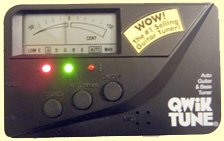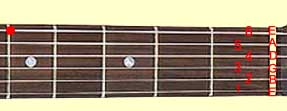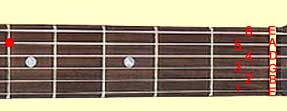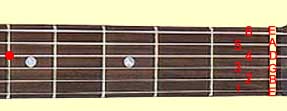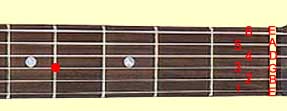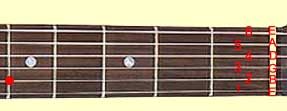|
Guitar Tuning Basics
Before you can play the guitar you must make sure that it is in tune. Guitar tuning can be done in several ways, either by using an electronic tuner, or simply tuning by ear. In order to tune by ear you must already have an ear for the notes, therefore, using an electronic tuner works great for beginner guitar players.
There are many different types of electronic tuners but the one that is used the most is a chromatic tuner as shown in the picture. This particular one has led lights and an electronic needle. The three led lights have a red light on the left, a green light in the middle, and another red light on the right.
5th Fret TuningGuitar tuning by using the 5th and 4th fret is a way that you can tune your guitar or bass guitar if you do not have a tuner. The first thing you want to do is tune the low E string which is actually the 6th string or the larger string. To use this method you do need to be able to hear the notes and compare the sound you hear.
Next, press the A string on the 5th fret and pluck the A and D string and adjust the tuning key for the D string until you get the same pitch of the notes
Now press the D string on the 5th fret and pluck the D and G string and adjust the tuning key for the G string until you hear the same tone.
This time press the G string on the 4th fret and pluck the G and B string and adjust the key for the B string until you hear the same tone.
Finally, press the B string back on the 5th fret and pluck the B string and the high E string and adjust the key until you hear the same tone. Guitar tuning is fun isn't it?
There you have it; you have now tuned your guitar without a tuner and if you didn’t use a piano or keyboard, as long as you are close on the low E string the rest will be in tune close enough to play. Guitar tuning this way isn’t that hard and is a good way to tune your guitar if you don’t have a tuner. Click here to learn guitar theory
|
